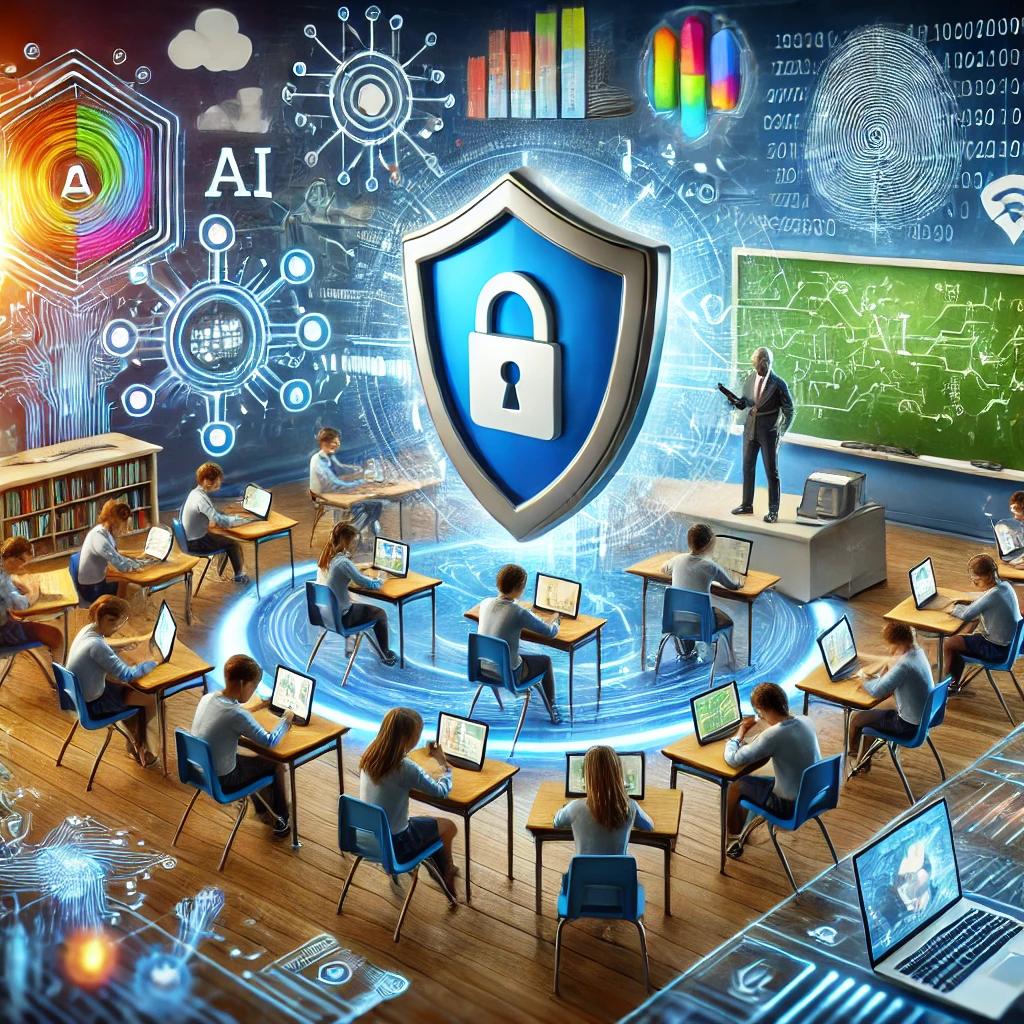What’s In, What’s Out for AI, Cellphones, Cybersecurity, and Other Ed-Tech Stuff
As we navigate through the 21st century, the intersection of technology and education continues to evolve at an unprecedented pace. Educators, administrators, and students alike are witnessing the emergence of new tools, trends, and practices that significantly impact the learning experience. In this blog post, we’ll explore what’s currently trending in the realms of artificial intelligence (AI), cellphones, cybersecurity, and other crucial aspects of educational technology (ed-tech).
The Rise of AI in Education
Artificial intelligence has become a significant player in the ed-tech landscape, transforming how educators teach and students learn. Innovative applications of AI are reshaping personalized learning, automating administrative tasks, and enhancing student engagement.
Personalized Learning
AI-powered platforms enable educators to tailor learning experiences according to individual student needs. These technologies can analyze students’ learning habits and performance, providing real-time feedback and recommendations. With the help of AI, personalized learning plans can be developed, allowing students to progress at their own pace. This customization not only improves student outcomes but also fosters a stronger connection between educators and learners.
Automation of Administrative Tasks
Another area where AI shines is in automating routine administrative tasks. By taking over mundane processes, such as grading assignments and managing attendance, AI allows educators to focus more on teaching and less on paperwork. This shift can lead to improved job satisfaction among teachers, enabling them to dedicate more energy and creativity to their students.
Enhanced Student Engagement
AI technologies, such as chatbots and virtual assistants, are revolutionizing student engagement. These tools provide immediate assistance, answering questions and offering support outside of traditional classroom hours. By facilitating communication, AI enhances the overall learning experience and empowers students to take charge of their education.
Cellphones: A Double-Edged Sword
Cellphones have become ubiquitous in our society, and their presence in educational settings is no exception. While many educators view smartphones as distractions, there is a growing movement advocating for their use as valuable learning tools.
The Case for Smartphones in Education
When used effectively, cellphones can be powerful learning aids. With access to the internet, students can conduct research, collaborate on projects, and utilize educational apps that reinforce classroom learning. As a result, educators are increasingly incorporating smartphone usage into their lesson plans, fostering a more dynamic and engaging classroom environment.
Developing Digital Citizenship
Moreover, integrating cellphones in the classroom can also serve to teach students about responsible digital citizenship. By guiding learners on how to navigate the digital world safely and respectfully, educators can help them develop essential skills that will benefit them in the long run. This includes understanding issues related to privacy, cyberbullying, and information credibility.
The Need for Balance
However, it is essential to strike a balance between encouraging smartphone use and minimizing distractions. Schools must establish clear policies regarding cellphone usage to create an environment conducive to learning. Implementing strategies, such as designated phone-free periods, can help maintain focus while still allowing students to benefit from their devices.
Cybersecurity in an Increasingly Digital World
As educational institutions become more reliant on technology, the importance of cybersecurity cannot be overstated. With data breaches and cyber threats on the rise, it is crucial for schools to prioritize the protection of sensitive information.
Understanding Cyber Threats
Educators and administrators must be aware of the various cyber threats that could jeopardize student data and institutional integrity. Common threats include phishing attacks, ransomware, and malware. Understanding these risks is the first step toward implementing effective cybersecurity measures.
Implementing Robust Security Measures
To safeguard against cyber threats, schools must invest in robust security measures. This includes utilizing firewalls, encryption, and secure passwords, as well as conducting regular security audits and training for staff and students. By fostering a culture of cybersecurity awareness, educational institutions can better protect their data and resources.
The Role of Policy and Compliance
In addition to technical measures, schools must also adhere to relevant regulations and policies regarding data protection. Compliance with laws such as the Family Educational Rights and Privacy Act (FERPA) is essential for maintaining student privacy and trust. Schools should stay informed about policy changes to ensure they are meeting legal requirements.
The Future of Ed-Tech Trends
As we look ahead, several trends are likely to shape the future of educational technology. From the growing influence of virtual reality (VR) to the continued rise of online learning platforms, the ed-tech landscape is poised for further transformation.
Virtual Reality in Learning
Virtual reality has the potential to revolutionize how students experience education. By immersing students in simulated environments, VR can provide hands-on learning experiences that enhance understanding and retention. From virtual field trips to interactive science labs, the possibilities are endless.
Online Learning Platforms
The demand for online learning platforms has skyrocketed in recent years, a trend accelerated by the pandemic. Schools are increasingly adopting blended learning models, combining traditional classroom instruction with online resources. As technology continues to improve, we can expect even more innovative online learning solutions to emerge.
Focus on Mental Health and Wellbeing
In addition to academic success, the wellbeing of students is gaining prominence in the education sector. Technology can play a significant role in supporting mental health initiatives, providing resources such as counseling apps and mindfulness platforms. By prioritizing mental health, schools can create a more holistic educational experience.
Conclusion
The world of educational technology is constantly evolving, with trends in AI, cellphone usage, cybersecurity, and beyond shaping the future of learning. As educators and institutions embrace these changes, it is crucial to remain adaptable and open-minded. By understanding the benefits and challenges associated with these technologies, we can harness their potential to create a more engaging, secure, and effective learning environment for all.
As we move forward, the key lies in striking a balance between innovation and responsibility, ensuring that technology serves as a tool for empowerment rather than a hindrance. The future of education is bright, and with the right approach, we can navigate the exciting landscape ahead.



